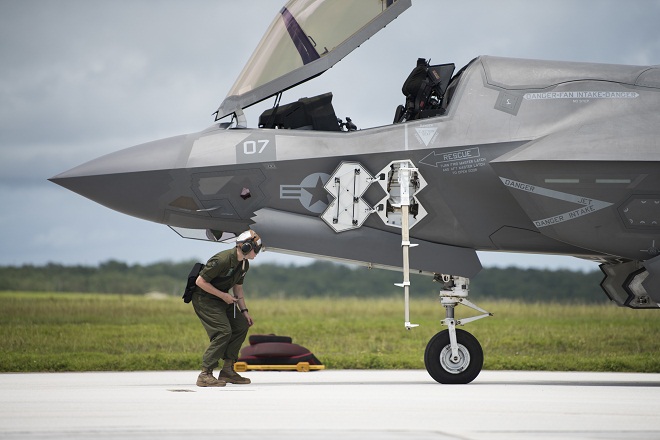Japan New Defense Plans OK Aircraft Carrier Operation
December 18, 2018
Tokyo--The Japanese government adopted Tuesday new national defense program guidelines and a medium-tern arms and equipment procurement program, paving the way for the country to operate a de facto carrier of jet fighters amid China's rapid military expansion into the Pacific Ocean.
Given the greenlight at National Security Council and cabinet meetings, the new defense guidelines over the next 10 years or so say it is "critically important" for Japan to strengthen its defense capabilities in space and cyberspace and against attacks with electromagnetic waves.
The guidelines then hammered out an initiative to build a multidimensional, integrated defense posture that enables the country to simultaneously carry out maneuvers in those new fields and the conventional air, ground and maritime operations.
For the conventional areas, the guidelines, revised for the first time in five years and for the second time under the administration of Prime Minister Shinzo Abe, specify a plan to take necessary measures to allow short takeoffs and vertical landings (STOVL) aircraft to use a Maritime Self-Defense Force destroyer.
The procurement program covering five years from fiscal 2019 starting next April notes that Japan will purchase 45 F-35 stealth fighter jets from the United States, including 18 units of the F-35B STOVL, to replace F-15 fighters and remodel the Izumo-class flat-top destroyer for the F-35B operation.
The government has explained that Japan is not allowed to possess any attack aircraft carrier because the practice goes beyond its defense-only policy under a pacifist constitutional clause.
According to the five-year program, the Izumo-class helicopter carrier will be converted into a multifunctional flattop and F-35B jets to use the vessel will not only counter air strikes but conduct warning and surveillance activities, join training programs and engage in disaster response operations.
Due to proposed purchases of high-priced equipment such as the F-35s, the five-year procurement budget swelled to a record 27,470 billion yen.
The ruling Liberal Democratic Party had urged the government to include in the program acquisitions of capabilities to attack enemy bases. Although the controversial request was rejected, the government vowed to deploy long-range cruise missiles to effectively possess such capabilities.
To beef up defenses in the new fields, the guidelines call on Japan to adopt "cross-domain" tactics to "organically fuse capabilities in all domains" into one to improve the overall ability to win so-called hybrid wars which intentionally obscure boundaries between military and civil activities.
Specifically, the government puts priority on acquiring capabilities to counter attacks in the cyberspace.
In this regard, the number of members of the joint Cyber Defense Unit of the Air, Ground and Maritime SDFs will be increased to around 500 and a special unit to help Japan take lead in space development will be set up in the ASDF, according to the guidelines. Jiji Press
Latest Videos
- THE UNTOLD STORY EXPERT INSIGHTS INTO THE UKRAINE
- NEGOTIATING A NEW ORDER US RUSSIA TALKS ON UKRAIN
- Ukraine: A Pawn in the Geopolitical Game? Will Trump Intervene?
- US VP VANCE CRITICIZES EUROPEAN DEMOCRACIES AT MUNICH SECURITY CONFERENCE
- UNCOVERING THE WEB OF DECEIT: CIA INFILTRATION OF THE MEDIA
- SHIFTING SANDS: TULSI GABBARD’S CONFIRMATION AND THE EVOLVING GLOBAL LANDSCAPE
- FAUCI SCANDAL: A THREAT TO GLOBAL HEALTH AND DEMOCRACY






